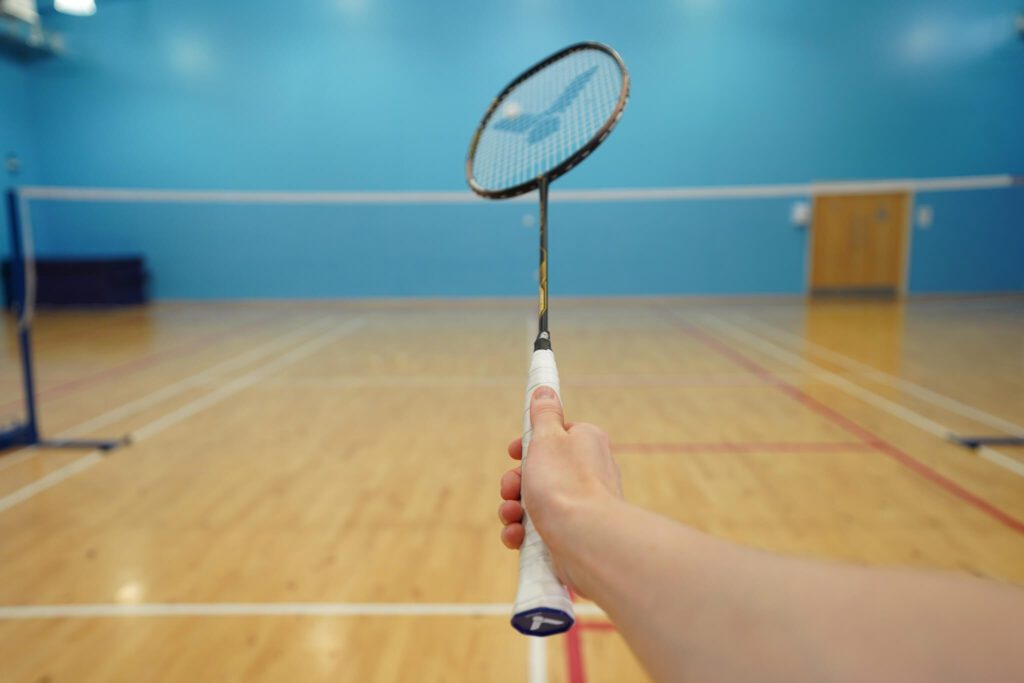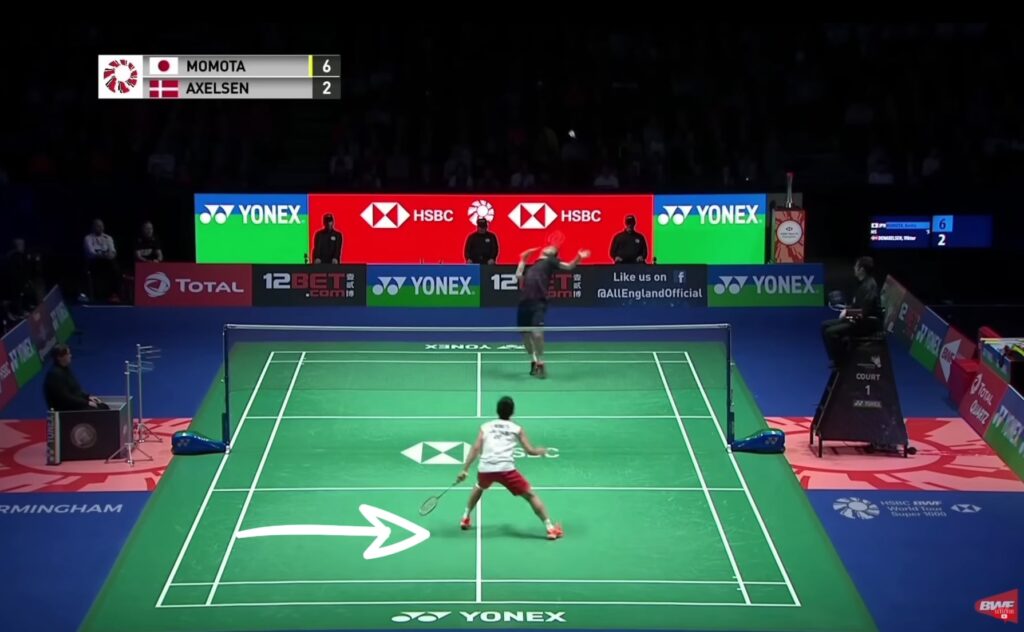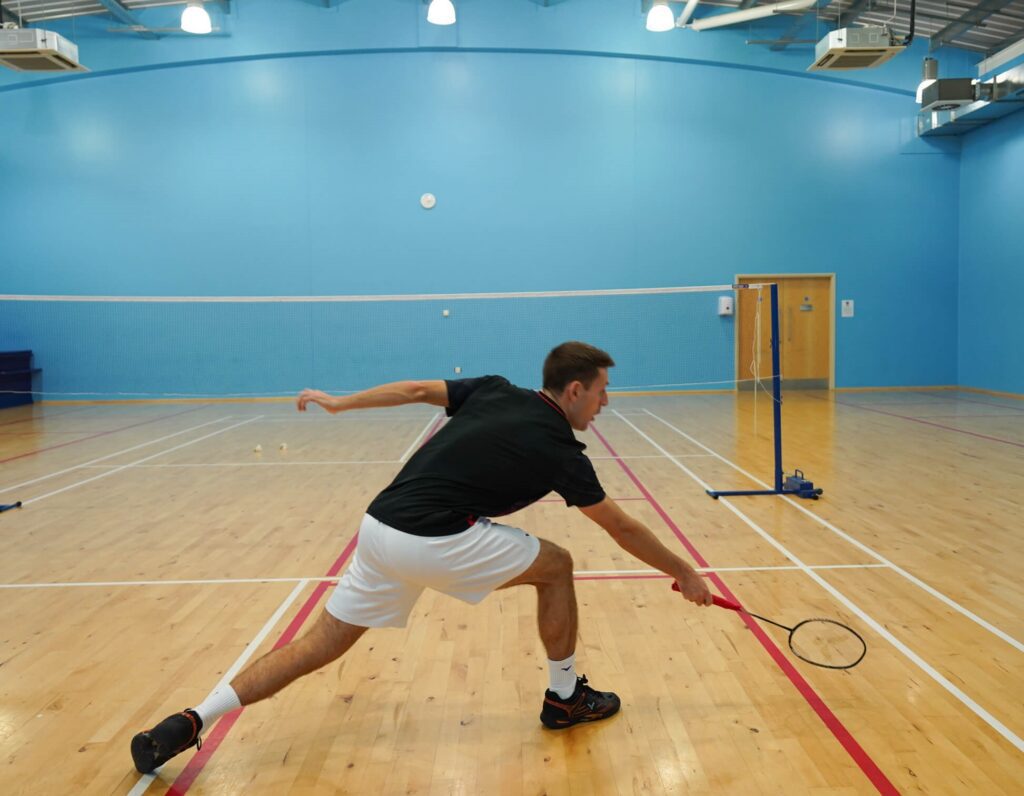How To Defend In Singles - Badminton Tutorial (With Pictures)
Having a good defence in singles is a very important skill as it makes it harder for your opponent to win the point, making them more likely to try to play even better shots and make a mistake as a result.
There are broadly 3 main ‘types’ of defence in badminton:
- Defending drop shots
- Defending smashes
- Defending shots deep into the rear court
The key components of a good singles defence include having a neutral bevel grip, your racket head pointing down, performing a split step, then stepping or lunging into the shot with a relatively straight racket arm to maximise your reach.
We’re now going to answer the 5 most common questions we get asked about singles defence, specifically when defending drop shots and smashes:
#1 – What Should Your Ready Position Be When Defending?
Racket Positioning
A common mistake we see is people preparing to defend with their racket outstretched in front of them with the intention to take the shuttle as early as possible.

However, as the attack is often coming so fast, having your racket out like this will mean you probably won’t be able to react in time.
As the most likely shot from your opponent is downwards, your first movement will have to be moving your racket downwards and backwards. This wastes time and means you are likely to play the shuttle much later, or just not get it at all.
Instead, you should have your racket arm elbow roughly in line with your body, and the racket head is down by your knees.

As we have mentioned, the most likely shot is downwards, so it’s most efficient to have your racket already down at this angle.
Grip
You should ideally be in a neutral bevel grip. Similar to the racket positioning, this is to be as efficient as possible, as you don’t always have time to change between grips. You can learn more about this grip (and the different types of grips in badminton) here.

#2 – Where Should You Stand When Defending?
Let’s have a look at Kento Momota’s (2018 & 2019 World Champion) positioning.

Almost every time he lifts, his base position moves slightly over to the side that he’s lifted to – and that’s what we’d recommend you do too!
This is because the hardest shot to get back is the straight smash, as the shuttle has the shortest distance to travel, and you therefore have the least time to react.
So, you don’t necessarily have to return to the absolute centre of the court every time!
There are also 2 other factors affecting your positioning on the court:
- The quality of your lift – if you’ve played a good lift, your opponent is more likely to play a drop shot than a smash, so you can anticipate this and move your positioning forwards. However, if your opponent is in a really threatening position, you might need to move your base position backwards to give yourself more time to react to the smash.
- Knowing your opponent’s favourite shot – for example, if you know your opponent loves to play a round the head cross-court smash, you might not move your base position to cover the straight, and instead have a more central position.
#3 – What Is The Correct Footwork For Singles Defence?
The Split Step
You should start your split step just before your opponent has hit the shuttle so that by the time you land, the shuttle has been struck and you know which direction to move to.
This way, you can quickly push off in the right direction just after your opponent has hit their shot.

💡 You should always do a split step even if you feel like you don’t have much time, as it enables you to push off explosively in any direction. This is extremely important and you can learn more about the split step here.
One of the most common mistakes we see is players with their legs too straight, in both their preparation and when they’re moving to the shuttle. This is especially common for tall players!
Having a low centre of gravity helps you move faster and be more in control of your body, helping you to play a better quality shot!
#4 – How Do You Know Which Side To Go To When Defending?
Most of the time, you can only make this decision once you see where your opponent has hit to, which requires:
- A good split step
- Good reactions
- The ability to anticipate where your opponent is going to hit to
To anticipate where your opponent is going to hit to, you should watch their body and racket positioning. For example, if they turn their body to face cross-court, you can anticipate a cross-court shot! You can therefore start moving your bodyweight in this direction.
The more you train these predictive mechanisms, the faster you will be able to react.
You can also learn what their favourite shots are over the court of a match and start to predict which side they will attack to.
This becomes harder when you play against better players who play multiple shots with the exact same preparation technique!
#5 – How Do You Play Good Quality Shots In Defence?
Here are some key tips:
- Don’t jump out to the side of the court. Instead, you should step or lunge as this will give you more control of your body and racket, and you’ll therefore be able to play a better quality shot.


- Don’t lean too much so your racket arm is really far away from your body. Your arm and leg should move out at the same time, and should always stay a similar distance apart. This helps with control, and therefore shot quality.
- Your racket arm should be quite straight to maximise your reach. As you are striking the shuttle, you need to bend your wrist to be able to angle your strings upwards and hit the shuttle over the net.

- Don’t land your foot too early – otherwise you might have to stretch to reach the shuttle, meaning you collapse your core and and lose control of your shot. You want to land just before you strike the shuttle.
- Good quality shots also come from being able to predict your opponents attacking shots and be earlier onto them. We have discussed this briefly within this article, but here are some more questions you should think about:
1. Which side of the court you are lifting to? Is it their stronger side or their weaker side?
2. Are they likely to attack straight or cross?
3. Will their attack come to your stronger defensive side or your weaker defensive side?
When we spoke with professional singles player Hans-Kristian Solberg Vittinghus as part of a Patreon match analysis video he mentioned that he usually lifts to his opponents round the head corner. This is to try and get them to smash straight down the line to his forehand side for him to play a cross-court defensive shot – one of his favourite shots!
Learn More
Hopefully you’ve now learned that being in a defensive position doesn’t mean you will lose the rally, but with the right positioning, preparation, footwork and knowledge, you can defend to your advantage!
If you’d like to watch our YouTube video on how to defend in singles which includes more visual explanations and 3 practices you can do to improve your singles defence, you can do so below!

